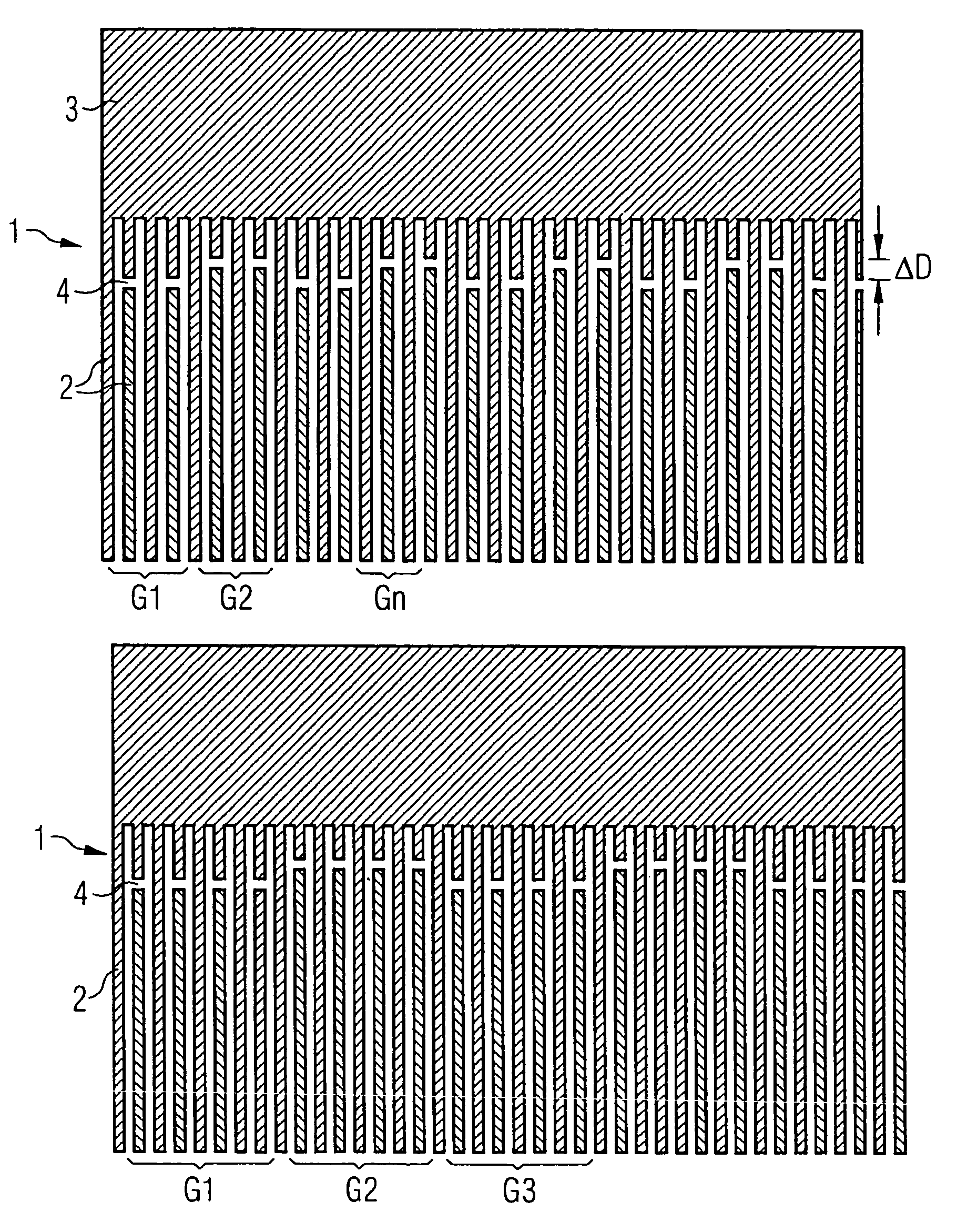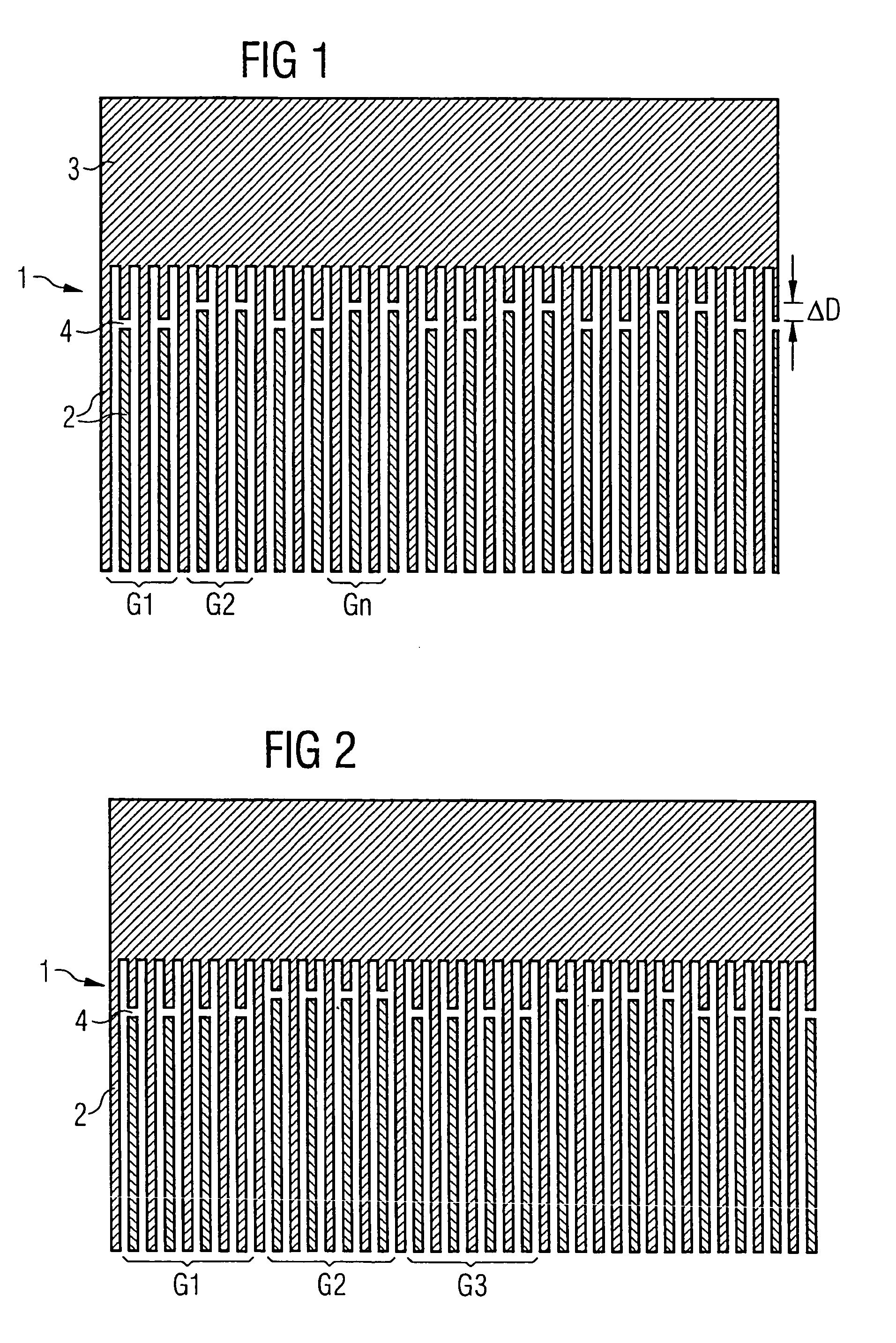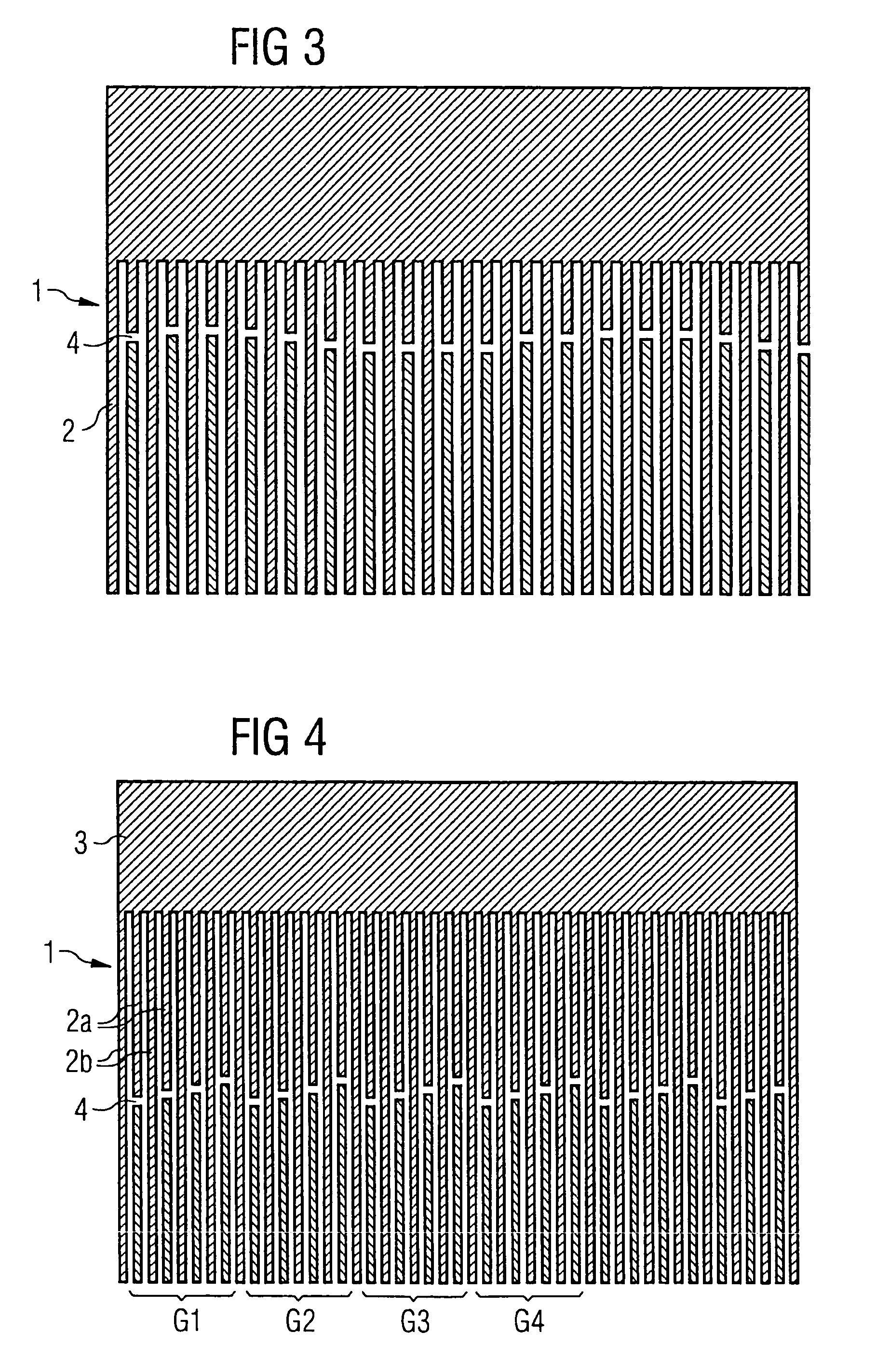Converter for surface waves with improved suppression of interfering excitation
a technology of surface waves and transducers, applied in the direction of electrical transducers, generators/motors, impedence networks, etc., can solve the problems of increased insertion dampening, unwanted conductivity, draining signal energy, etc., and achieve the effect of improving insertion dampening
- Summary
- Abstract
- Description
- Claims
- Application Information
AI Technical Summary
Benefits of technology
Problems solved by technology
Method used
Image
Examples
Embodiment Construction
[0046]FIG. 1 shows a simple embodiment of the invention. Shown section-by-section is a normal finger transducer 1 in the area of a busbar 3. This transducer comprises two electrode fingers 2 per wavelength. In this embodiment, the transducer is varied with regard to the transversal gap position. The absolute amount ΔD by which the gaps 4 are maximally displaced here amounts to less than two electrode finger widths (in a normal finger transducer thus less than a distance that corresponds to half a excitation light at middle frequency). Via displacement in pairs of two respectively adjacent gaps opposite the two respectively adjacent pairs of gaps, the interfering excitation in the gap region is multiplied in the time domains with a further excitation function that has a period of four SAW (Surface Acoustic Wave) wavelengths. A folding in the frequency range thereby results, and a splitting of the excitation, which thereby disappears from the stop band range.
[0047]FIG. 2 likewise show...
PUM
 Login to View More
Login to View More Abstract
Description
Claims
Application Information
 Login to View More
Login to View More - R&D
- Intellectual Property
- Life Sciences
- Materials
- Tech Scout
- Unparalleled Data Quality
- Higher Quality Content
- 60% Fewer Hallucinations
Browse by: Latest US Patents, China's latest patents, Technical Efficacy Thesaurus, Application Domain, Technology Topic, Popular Technical Reports.
© 2025 PatSnap. All rights reserved.Legal|Privacy policy|Modern Slavery Act Transparency Statement|Sitemap|About US| Contact US: help@patsnap.com



